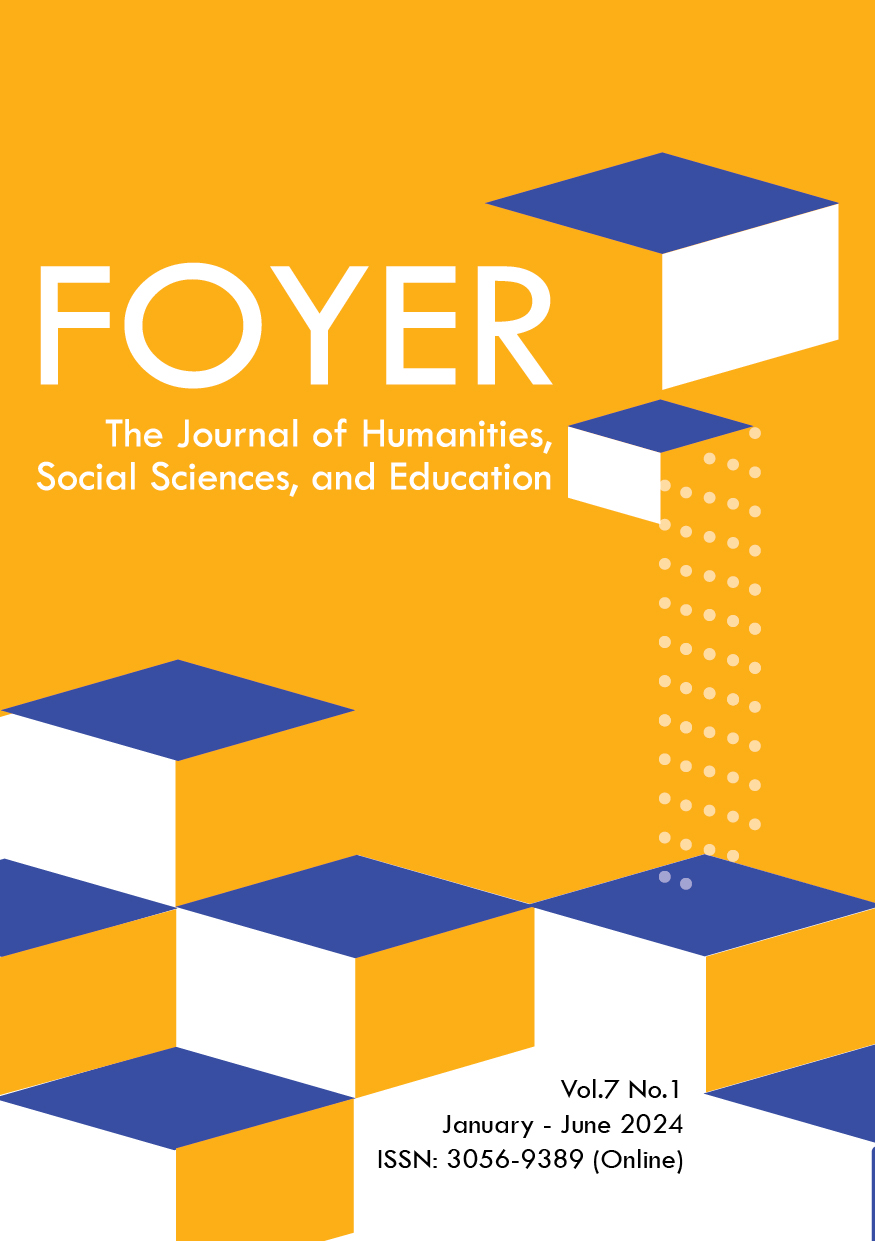Space, Daily Life, and Social Media Sites: A Study of Spatial Change and Semio-Capitalism
Keywords:
semio-capitalism, space, daily life, social media, subjectificationAbstract
This article intends to analyze socio-economic phenomena related to the correlations among “Individual-Material Space-Immaterial Space”, essential mechanism of the contemporary world. It aims especially to analyze the interrelation between the shift of material spaces and the process of subjectification on social media within the context of semio-capitalism. The interdisciplinary approach, consisting of historical studies, cultural studies, and geography—all of which are tools for explaining existing phenomena—was employed. This article undertook an examination of leisure spaces in northern and central regions of Thailand in the late 2010s to determine the dynamics of space, which parallel socio-economic development.
An analysis of the results revealed that material space has been adapted to align with the construction of individual identities through social media sites. Simultaneously, social media, an immaterial realm, grants individuals the freedom to create meaning and symbols through continuous content production in all facets of their daily lives. Consequently, material space transforms into a simulacrum that perpetually responds to the construction of individual identities. It becomes a simulated realm reflecting people's thoughts, emotions, and aesthetic values, which are continually reproduced. In the world of semio-capitalism, materials are reduced to mere projections of various 'realities’.
References
Balinan. (2023). Thank you for your feedback: Nan is an ancient valley town infused with Lanna culture. https://www.facebook.com/Bali.Nan.Th/posts/pfbid02X9H1Ejg6m4t6XcFDmr4HTMxCDWJLywoz2aF2wfKAyeAreEY1gV7Z8ssGn1KVzGTYl
Baudrillard, J. (1994). Simulacra and simulation. University of Michigan Press.
Berardi, F. (2009). Precarious rhapsody: Semiocapitalism and the pathologies of the post-alpha generation. Minor Compositions.
Berardi, F. (2012). The uprising: On poetry and finance. Semiotext(e).
Bintorleb, A. (2021). The change of leisure space in Thailand: An extension of 'Café' in Chiang Mai 2007-2020. Paper presented at the 5th Arts Undergraduate Humanities Symposium, Faculty of Arts, Chulalongkorn University.
Chiang Mai We Care. (2021, July 29). Chiang Mai, The city of coffee – It takes 7 years to taste each of shop a day. https://www.facebook.com/profile/100064331514499/search/?q=%E0%B9%80%E0%B8%A1%E0%B8%B7%E0%B8%AD%E0%B8%87%E0%B8%81%E0%B8%B2%E0%B9%81%E0%B8%9F
Corporate Communication and Alumni Relations Center. (2021). Mae Kha Canal, one of the fortunate signs of Chiang Mai portrayed as a “Cultural Stream”. https://www.cmu.ac.th/th/article/aaf8b386-2528-4353-91ea-78c535f6a4e7
Corporate Communication and Alumni Relations Center. (2022). CMU follow up on the progression of Mea Kha canal improvement in Ra Kaeng rode; landscape, pavement, and sewage development, all of which have proceeded over 90 % and are ready to be a Check-in spot as well as being an economics spot for community. https://www.cmu.ac.th/th/article/80094ca5-8cd8-4360-8677-175fe0879b6b
Ditch the Label. (2017). Are you living an Insta Lie? social media vs. reality. https://www.youtube.com/watch?v=0EFHbruKEmw&t=52s
Doi Chaang Coffee. (2024). Doi Chaang coffee, A legendary chronicle. https://doichaangcoffee.co.th/about-us/the-legend/
Eyedropper Fill. (2019). When the concept of making any space “instagrammable” is about to destroy designing front. https://www.the101.world/instagrammable-trend/
Fairs, M. (2018). Creating instagrammable moments "now part of architectural briefs" says Farshid Moussavi. https://www.dezeen.com/2018/06/05/instagram-moments-farshid-moussavi-instagram-architecture/
Hinton, S. (2013). Understanding social media. Sage.
Jennings, W. (2019). Should architects design provocatively ugly architecture that does not conform to Instagram's aesthetic conventions?. https://www.dezeen.com/2019/09/05/anti-instagram-architecture-will-jennings/
Kitirianglarp, K. (2017). Autonomia; cognetive capitalism, immaterial labors, and communal revolutions. Illuminations Editions.
Lee Ayu Chuepa. (2024). Akha Ama. http://article.culture.go.th/ index.php/blog/3-column-layout-4/161-akha-ama
Mae Kha Canal. (2022). Chiang Mai’s Otaru. https://www.paiduaykan.com/travel/%E0%B8%84%E0%B8%A5%E0%B8%AD%E0%B8%87%E0%B9%81%E0%B8%A1%E0%B9%88%E0%B8%82%E0%B9%88%E0%B8%B2
MGR Online. (2018). “Best-Ben-Junior” launche a hip coffee shop on the series “Hipster or Loser”. https://mgronline.com/ drama/detail/9610000123025
MGR Online. (2022). Get to know “Mae Kha Cannal” the newly fascinating landmark that makes you feel like you are in Japan. https://mgronline.com/travel/detail/9650000101065
Miller, D., Sinanan, J., Wang, X., McDonald, T., Haynes, N., Costa, E., & Nicolescu, R. (2016). How the world changed social media. UCL Press.
Nnanthisin. (2022). 40 Coffee shops in Bangkok that you must not miss for Café-Hopping!. https://food.trueid.net/detail/jPKyxQRJkxnz
Plianmolee, P. (2019). Department of industrial promotion stimulates a coffee strategy in order to promote Chiang Mai as a regional center of coffee. Journal of Industrial Science, 61. https://e-journal.dip.go.th/dip/images/ejournal/eab336740e8954fcf66765dc0ff04a9a.pdf
Potjanalawan, P. (2020). On Thai tourism. Sommadhi.
Puksuk, P. (2023). The architecture of neoliberalism: Douglas spencer. https://www.the101.world/douglas-spencer-interview/?fbclid=IwAR3r36r1BSWM1_EOwiq-G8NX1swBSjM5Ep8v7JbBFu6PHvbBmHuTuCqDabk
Simanowski, R., DeMarco, A., & Gillespie, S. H. (2018). Waste : a new media primer. The MIT Press.
Soja, E. W. (1996). Thirdspace : journeys to los angeles and other real-and-imagined places. Blackwell Publishers.
Supachanya, S. (2013). Critique on movie “Coffee Please: This cups is heart racing”. http://www.thaicinema.org/reviewsth99_016coffeeplease.php
Supanan, S. (2011). Space, time, identity, and the creation of social meaning. Journal of Communication Arts, 29(3), 186-204.
Wongsawangpanich, K. (2017). Simulacra : When “Coconut Shell” is bigger than the country. https://thematter.co/uncategorized/simulacra/39602#google_vignette
Worrakawin, K. (2003). Tourism geography of Thailand. Institute of Academic Development (IAD).
Wuttipitayamongkol, T. (2019). Why do hipsters look all the same? The answer to which is in the mathematics perception. https://adaymagazine.com/why-hipsters-all-look-the-same/
Yotmanut Khonthammada. (2019). Sightseeing Daenneramit: Daenneramit, a legendary Thai theme park, a dreamland that the kids want to experience once in a lifetime. https://readthecloud.co/magic-land-bangkok/
Downloads
Published
How to Cite
Issue
Section
License

This work is licensed under a Creative Commons Attribution-NonCommercial-NoDerivatives 4.0 International License.



